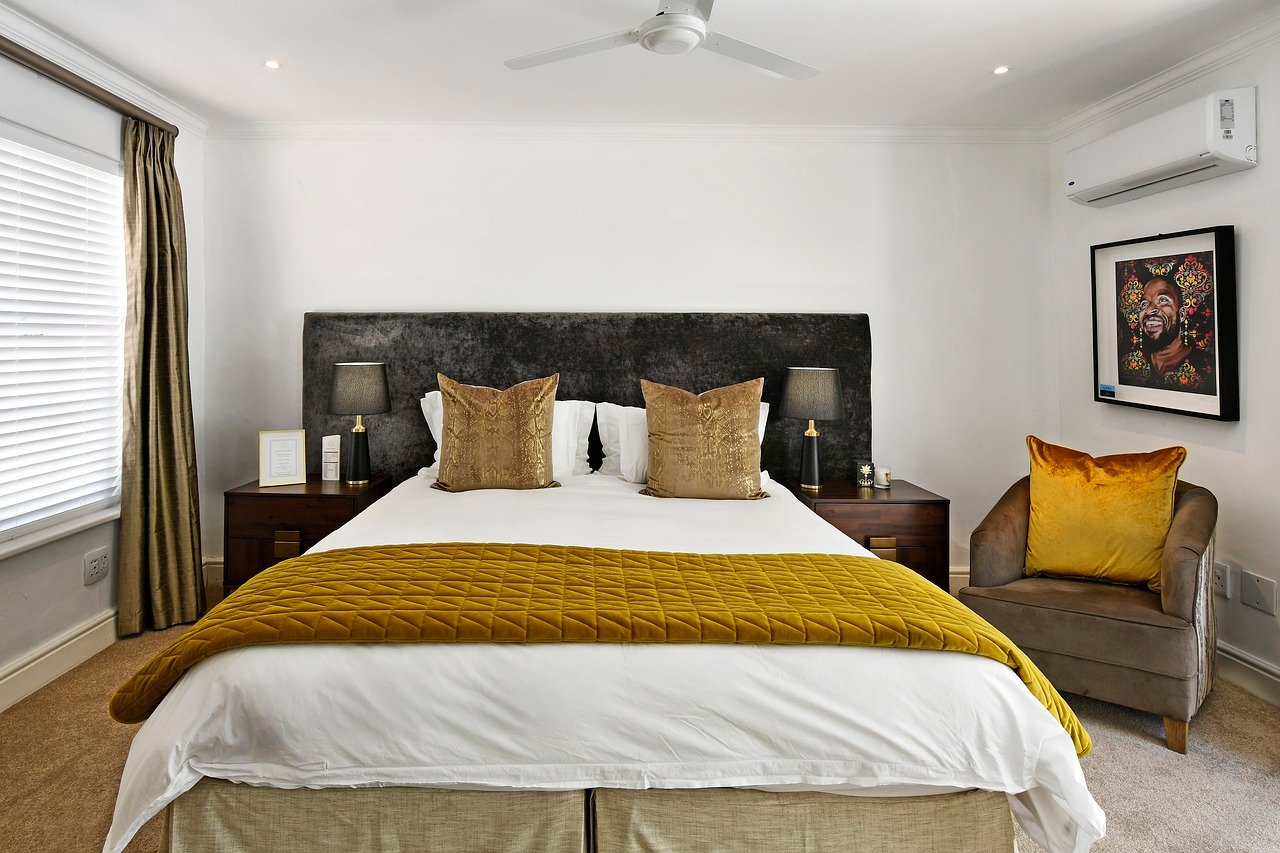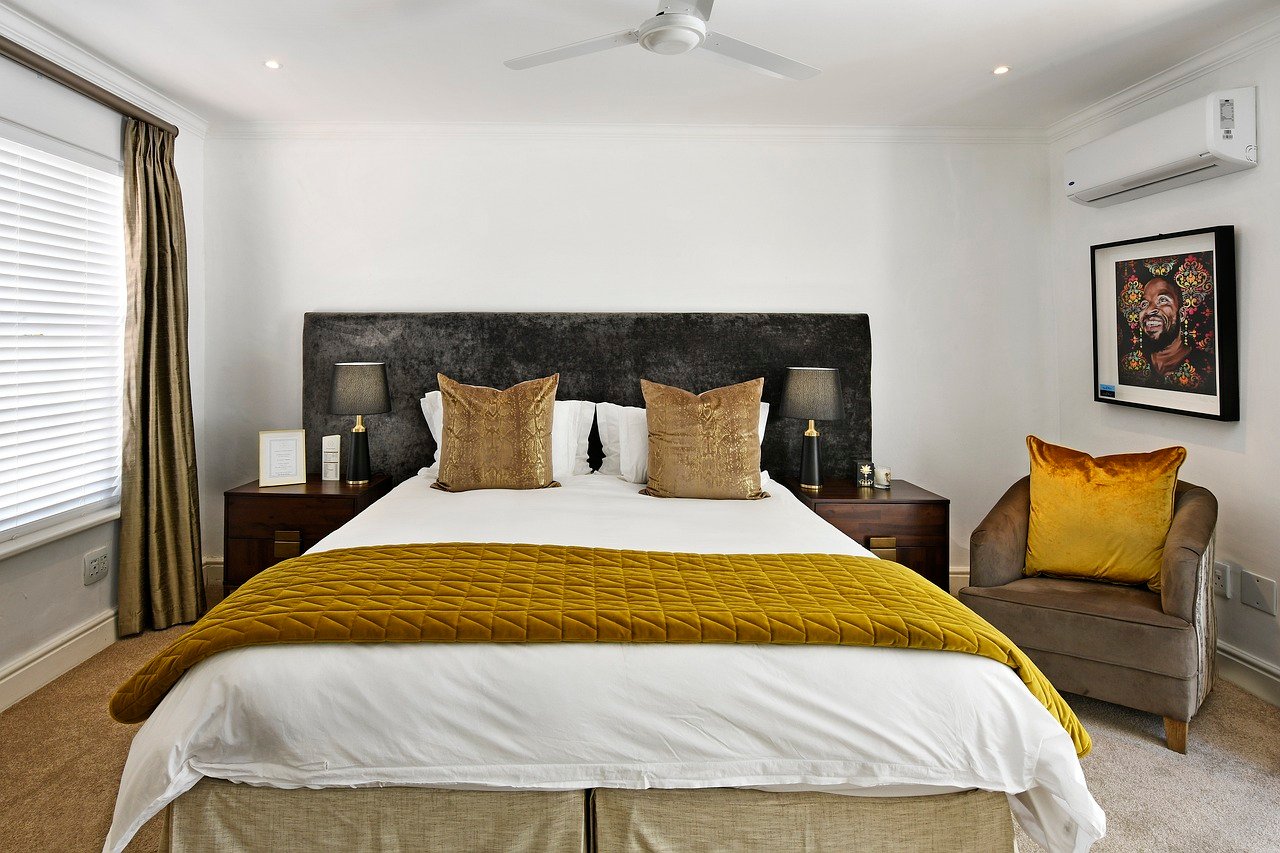
If you find yourself tossing and turning every night, struggling to find a comfortable position to sleep in, then side sleeping might just be the answer you have been searching for. But simply shifting to your side is not enough; creating a comfortable sleep environment is equally important. From choosing the right pillow to setting the perfect room temperature, there are several factors that contribute to a blissful night’s sleep on your side. In this article, we will explore some essential tips and tricks to help you create the perfect sleep environment for side sleeping, ensuring that you wake up refreshed and rejuvenated every morning.

Choosing the Right Mattress
When it comes to choosing the right mattress for a comfortable sleep environment, there are several factors to consider. First and foremost, you should consider the firmness level that suits your sleeping preferences and needs. Some people prefer a softer mattress, while others prefer a firmer one. It’s important to find the perfect balance that provides enough support for your body while also cushioning your pressure points. Additionally, you should select a mattress size that fits your needs. Whether you sleep alone or with a partner, make sure there is enough space for both of you to move comfortably throughout the night. Finally, testing out different options before making a purchase is crucial. Take the time to lie down on various mattresses and assess their comfort level to ensure you make the right choice.
Picking the Right Pillow
Choosing the right pillow is equally as important as selecting the right mattress. For side sleepers, it is recommended to opt for a contoured pillow that provides adequate support for the neck and head. This helps maintain proper alignment of the spine, reducing the risk of waking up with a sore neck or shoulders. Additionally, consider the pillow’s loft, which refers to its height. Side sleepers generally benefit from a slightly higher loft to ensure their head is level with their shoulders. Take into account the materials and fillings of the pillow as well. Memory foam or latex pillows are popular choices due to their ability to conform to the shape of your head and neck. Lastly, look for pillows with cooling properties to prevent overheating during the night.

Finding the Ideal Bedding
To create a comfortable sleep environment, it’s important to focus on the bedding as well. Use breathable sheets made from natural materials, such as cotton or linen. These materials allow for better airflow and temperature regulation, keeping you cool and comfortable throughout the night. When selecting sheets, consider the thread count, which refers to the number of threads per square inch of fabric. Opt for a thread count of 300-400 for a soft and durable feel. Additionally, choose the appropriate weight for blankets or duvets based on your personal preferences and the climate you live in. Lastly, consider temperature regulation. Look for bedding with moisture-wicking properties or cooling technologies to help regulate your body temperature and prevent night sweats.
Addressing Sleep Position and Alignment
Maintaining proper sleep position and alignment is essential for a comfortable sleep environment, regardless of whether you are a side sleeper or not. For side sleepers specifically, it’s important to ensure that your spine remains properly aligned. One way to achieve this is by using additional supportive cushions. Placing a cushion between your knees helps align your hips and reduces strain on your lower back. Consider using a body pillow, which can provide support for your entire body, promoting better alignment and reducing pressure points. Experiment with different leg positions to find the most comfortable and supportive one for you. Lastly, prevent shoulder pain by ensuring that your pillow adequately supports your head and neck and relieves any strain on your shoulder.

Creating a Calming Atmosphere
A calming atmosphere can significantly contribute to a comfortable sleep environment. Control the room temperature to a level that is most comfortable for you. Consider using a fan or air conditioner during the warmer months and a space heater during the colder months to achieve the ideal temperature. Keep noise to a minimum by using earplugs or white noise machines to drown out any disruptive sounds. Additionally, block out unwanted light by using blackout curtains or blinds to create a dark environment that promotes better sleep. Use aromatherapy or essential oils to create a soothing ambiance. Scents like lavender or chamomile are known for their relaxing properties. Lastly, consider using a white noise machine to mask any background noise and promote a more peaceful sleep environment.
Maintaining a Clean and Clutter-free Bedroom
A clutter-free bedroom can have a significant impact on creating a comfortable sleep environment. Keep the bedroom tidy by regularly cleaning and organizing. Removing unnecessary items and keeping surfaces clear not only creates a calming atmosphere but also reduces distractions. Remove electronics from the bedroom, especially those with bright screens that emit blue light. Blue light can disrupt your circadian rhythm and interfere with your sleep quality. Ensure proper ventilation in the bedroom by opening windows or using a fan to improve air circulation. Investing in a good quality air purifier can also help eliminate allergens and improve air quality, creating a healthier sleep environment.
Implementing Healthy Bedtime Habits
Creating healthy bedtime habits is crucial for a comfortable sleep environment. Establish a consistent sleep schedule by going to bed and waking up at the same time each day, even on weekends. This helps regulate your body’s internal clock and promotes better sleep quality. Create a nighttime routine that signals to your body that it’s time to unwind and relax. This can include activities such as reading a book, taking a warm bath, or practicing relaxation techniques like deep breathing or meditation. Avoid stimulants before bed, such as caffeine or nicotine, as they can interfere with your ability to fall asleep. Limit exposure to screens, including smartphones, tablets, and TVs, as the blue light emitted by these devices can disrupt your sleep patterns. Instead, engage in relaxation techniques or read a book to wind down before bed.
Adding Supportive Accessories
In addition to a comfortable mattress and pillow, adding supportive accessories can enhance your sleep environment. Consider using a mattress topper to add an extra layer of comfort and support to your mattress. This can be especially beneficial for side sleepers who may need additional cushioning for their hips and shoulders. Wedge pillows are another useful accessory for side sleepers. Placing a wedge pillow under your upper body can help alleviate acid reflux or breathing difficulties. Adjustable bed bases are worth considering as they allow you to customize your sleeping position, providing optimal support and comfort. Finally, using knee pillows can promote proper spinal alignment by preventing your top leg from pulling your spine out of alignment.
Dealing with Discomfort and Pain
Discomfort and pain can significantly disrupt your sleep environment. There are several strategies you can try to alleviate these issues. Use heat or cold therapy to help relieve muscle soreness or joint pain. Applying a heating pad or a cold pack to the affected area before bed can provide temporary relief and promote relaxation. Practice gentle stretches before bed to help relieve tension and improve flexibility. Stretching exercises that target the areas of discomfort can alleviate pain and promote better sleep. If discomfort or pain persists or worsens, it may be necessary to seek professional help, such as consulting with a healthcare professional or a physical therapist, to address the underlying cause and explore appropriate treatment options.
Maintaining Overall Sleep Hygiene
Maintaining overall sleep hygiene is essential for a comfortable sleep environment. It encompasses various aspects of your daily routine and lifestyle choices. Follow a balanced diet that includes foods rich in sleep-promoting nutrients, such as magnesium and tryptophan. Stay hydrated throughout the day, as dehydration can negatively affect your sleep quality. Regular exercise can also contribute to better sleep by reducing stress and promoting overall health. Manage stress levels through relaxation techniques, such as meditation, deep breathing exercises, or engaging in activities that bring you joy and relaxation. Lastly, avoid excessive napping, especially in the late afternoon or evening, as it can interfere with your ability to fall asleep at night.
Creating a comfortable sleep environment for side sleeping involves considering various factors, from selecting the right mattress and pillow to addressing sleep position and alignment. Additionally, creating a calming atmosphere, maintaining a clean and clutter-free bedroom, implementing healthy bedtime habits, adding supportive accessories, dealing with discomfort and pain, and maintaining overall sleep hygiene all contribute to creating the ideal sleep environment. By following these tips and making necessary adjustments, you can significantly improve your sleep quality and wake up feeling refreshed and rejuvenated each morning.





